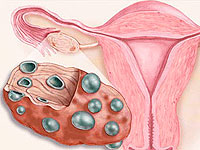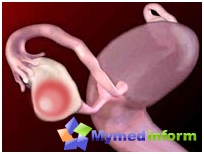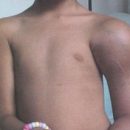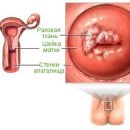Causes of the development of ovarian polycystic. Violation of endocrine and reproductive organism functions. Clinical picture and methods of treatment of ovarian polycystic.
Content

Polycystic ovarian — Disease with impaired endocrine and reproductive ovarian functions. Accompanied by hypersection of insulin, adrenal androgens and increased pituitary and hypothalamus activity. Occurs about 4-8% of women, starting with adolescence. Often becomes the cause of infertility and can cause various health problems. Treatment is carried out with the help of drug and surgical methods.
Polycystic ovarian (Stein-Leventhal syndrome) is a polylendocrine syndrome, which is accompanied by a violation of the ovarian functions — The absence of either irregular ovulation and increased secretion of estrogen and androgen. In case of disease, the ovary is affected by a large number of cyst with a diameter of 8-10 mm filled with liquid.
Clinical picture of polyendocrine syndrome
Polycystic is a disease of the women of reproductive age, the consequence of which is infertility. Often occurs in adolescence, starting from 12-13 years old when a hormonal restructuring begins in the body of the girl. The disease is subject to women up to 30-35 years, at a later age, they usually do not get ill.
Causes of ovarian polycystosis
Polycystic ovarian capable of provoking functional disorders of ovaries, adrenal glands, pituitary glands, hypothalamus and thyroid gland. The clinical picture of the disease may be different depending on the reasons that caused it. The defining role in the development of the disease is played by hereditary. The risks of the disease are subject to women who, among the nearest relatives there are patients with hypertensive disease, type 2 diabetes or obesity.
Symptoms of ovarian polycystosis
Symptoms of the disease have many, but each symptom separately cannot indicate the disease. Only the simultaneous manifestation of several signs indicates the likelihood of the development of ovarian polycystic. Among them:
 irregular menstruation or their absence;
irregular menstruation or their absence;- scarce or, on the contrary, abundant monthly, accompanied by painful sensations;
- obesity on male type, with the location of the main fat mass in the abdominal cavity;
- infertility as a result of the absence of ovulation;
- an increase in the blood concentration of androgen (male hormones);
- violation of hormonal imbalance, which can lead to partial baldness;
- The appearance of acne and seborrhea;
- frequent pain at the bottom of the abdomen and in the lower back;
- swelling of the mammary glands;
- Skin swelling;
- an increase in ovaries 2-3 times (one of the reasons may be a cyst);
- mood differences, depression, chronic fatigue;
- Increase in blood insulin.
If several symptoms have noticed immediately from the list, it is necessary to urgently undergo inspection at the gynecologist.
Possible complications
The disease can lead to a number of complications:
- infertility;
- diabetes;
- miscarriages and premature births;
- Endometrial cancer;
- Risk of developing hypertension, heart attacks and strokes.
Diagnosis and treatment
The diagnosis is made based on the results of the ultrasound and laboratory analysis on the content of hormones. In the treatment of ovarian polycystosis, a comprehensive approach is applied, pursuing a number of objectives:
- normalization of metabolic processes in the body;
- weight loss (in case of overweight);
- adjustment of the amount of androgens in the body;
- Restoration of ovulation and normal menstrual cycle;
- treatment of infertility;
- Treatment of endometrial hyperplasia.
Approximately 90% of women with this diagnosis have increased body weight and cosmetology defects. In the process of treatment, the urgent rash, excess hair on the face and the heads on the head.
Stages of medication treatment
Treatment begins with a decrease in body weight to normal significance. This is necessary to improve the effectiveness of procedures aimed at restoring metabolic processes and hormonal balance. At the second stage, hormonal disorders are treated, the treatment of insulin resistance reducing therapy is appointed. In the third stage, it is transferred to the stimulation of ovulation and restoration of the root port.
Laparoscopy with ovarian polycystic
In case drug treatment does not help, operational intervention is applied. The most modern of surgical methods is laparoscopy. To its advantages can be attributed to small traumaticity, fast postoperative recovery and the ability to parallel to eliminate the spikes in a small pelvis if available.









